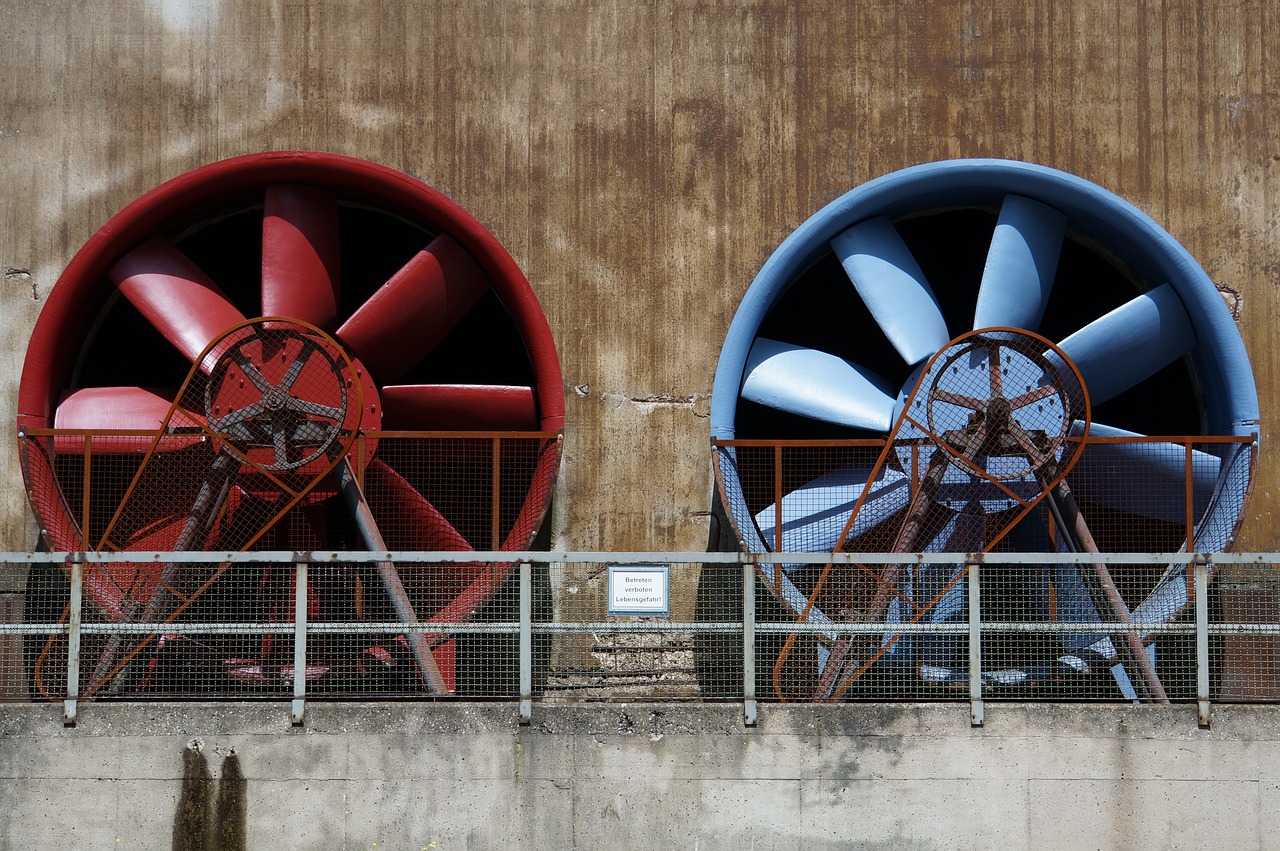In the realm of building design and maintenance, ventilation systems play an essential role. They are vital in promoting indoor air quality (IAQ), safeguarding the health of occupants, and ensuring the longevity of the building infrastructure. Ventilation can be categorized into two types – natural and mechanical. Natural ventilation relies on wind and thermal buoyancy, whereas mechanical systems utilize fans and ducts to move air. In this article, we will delve into the critical aspects of a ventilation system, the importance of proper ventilation, and how it can enhance the indoor environment of your building.
The Basics of Ventilation Systems
A ventilation system is an intrinsic component of a building’s infrastructure, designed to maintain a healthy and comfortable indoor environment. It involves the process of exchanging or replacing air within a space to regulate temperature, remove moisture, odors, smoke, heat, dust, airborne bacteria, carbon dioxide, and replenish oxygen.
En parallèle : The benefits of plants in the house
Ventilation includes both the exchange of air to the outside as well as circulation of air within the building. These systems are often implemented in buildings to maintain indoor air quality, control pressure relationships between spaces, and reduce excessive humidity levels. The selection and design of the appropriate ventilation system for a building require careful consideration of the building usage, geographic location, and local weather conditions.
Natural vs Mechanical Ventilation Systems
Natural ventilation systems rely on the pressures created by wind and temperature gradients to circulate air. In contrast, mechanical ventilation systems use fans and ducts to control airflow.
A voir aussi : How to create a dining area in a small kitchen
A natural ventilation system is often preferable for its low operating costs and minimal environmental impact. However, its effectiveness can be unpredictable as it depends largely on the weather, site location, and building configuration.
On the other hand, mechanical ventilation systems offer more control and reliability. They can be designed to operate in all weather conditions and are typically more effective in larger, more complex buildings. However, they often require more maintenance and can consume large amounts of energy.
The Role of Ventilation in Indoor Air Quality
Indoor air quality is a significant factor in the health and comfort of building occupants. Ventilation plays a pivotal role in controlling and diluting indoor pollutants. A poorly ventilated building can lead to a buildup of pollutants such as volatile organic compounds, allergens, and microbial contaminants, which can seriously impact the health of occupants.
With a good ventilation system, fresh air is continually supplied, and stale air is expelled, reducing the concentration of pollutants and increasing the overall air quality. Therefore, ensuring a proper ventilation system is crucial in maintaining a healthy indoor environment.
Importance of Proper Ventilation for Health
Proper ventilation is key to a healthy indoor environment. Buildings with poor ventilation can have detrimental effects on the health and wellbeing of occupants. It can lead to symptoms such as headaches, dizziness, fatigue, and in severe cases, respiratory diseases and allergies.
Good ventilation helps to control moisture and dampness in the building, preventing the growth of mold and mildew. It also aids in eliminating pollutants and allergens, thus reducing the risk of respiratory issues and improving overall indoor comfort.
Energy Efficiency and Ventilation
Energy efficiency and ventilation can seem at odds. On one hand, you want to seal off your building to conserve energy, but on the other, you need to allow fresh air in to ensure good indoor air quality.
However, advancements in technology have made it possible to achieve both. Energy recovery ventilation systems, for instance, use the energy contained in the outgoing stale air to pre-condition incoming fresh air, resulting in significant energy savings.
By optimizing the balance between energy efficiency and ventilation, you can ensure a comfortable, healthy, and sustainable indoor environment.
Maintenance and Regulation of Ventilation Systems
Maintaining a ventilation system is equally as important as its initial implementation. Neglected or poorly maintained systems can lead to poor indoor air quality and increase energy consumption. Regular checks and cleaning of the system components such as filters, fans, and ductwork are necessary to ensure optimal performance and longevity of the system.
Mechanical ventilation systems, in particular, require regular inspection and maintenance to ensure they are functioning efficiently. Components such as air filters need to be regularly cleaned or replaced to prevent the buildup of dust and other pollutants. Additionally, the system’s fans and ductwork should be inspected for any signs of wear or damage, which could affect the system’s performance.
The regulation of ventilation within a building is also crucial. A building’s ventilation rate, or the amount of outdoor air brought into the building, should be regulated based on its occupancy and use. This is typically achieved through a combination of fixed and variable ventilation rates. Fixed rates provide a consistent amount of fresh air, while variable rates adjust based on changes in occupancy, indoor air quality, or outdoor conditions.
The use of automated control systems can help in optimizing the ventilation rate. These systems use sensors to monitor indoor and outdoor air conditions and adjust the ventilation rate accordingly. For instance, if the sensors detect high levels of carbon dioxide or other pollutants in the indoor air, the system will increase the ventilation rate to bring in more fresh air.
Implementing Proper Ventilation in Building Design
Incorporating proper ventilation in building design is paramount. It is a critical aspect that architects, engineers, and building planners need to consider right from the initial design phase. The design should not only focus on achieving good indoor air quality but also consider energy efficiency and sustainability.
In designing the ventilation system, consideration must be given to factors such as building layout, occupancy, and local climate. For buildings located in hotter climates, for instance, natural ventilation systems which utilize wind and thermal buoyancy can be employed to help cool the building, thus reducing the reliance on energy-consuming air conditioning systems.
Windows and doors should be strategically placed to promote cross ventilation, and the use of high ceilings can enhance air circulation. Conversely, in colder climates, mechanical ventilation systems which can control and maintain indoor temperature may be more appropriate.
It’s also important to consider the building’s use. For instance, buildings with high occupancy or those where pollutants are likely to be present, such as factories or hospitals, may require more robust mechanical ventilation systems to ensure good indoor air quality.
Conclusion
In conclusion, ventilation systems are the lungs of any building infrastructure. They play a pivotal role in maintaining a healthy, comfortable, and energy-efficient indoor environment. A well-designed and properly maintained ventilation system can significantly improve indoor air quality, protect the health of occupants, and enhance the longevity of the building.
Whether natural or mechanical, each type of ventilation has its pros and cons. The choice largely depends on several factors, including the building’s location, design, use, and local climate conditions. Moreover, the balance between energy efficiency and good ventilation is crucial and can be achieved with the help of modern technologies such as energy recovery ventilation systems.
Incorporating proper ventilation strategies right from the design phase, regular maintenance of the system, and efficient regulation of ventilation rates are the keys to optimizing the benefits of a ventilation system. As we spend a large part of our time indoors, good ventilation is not just a building requirement, but a fundamental human necessity.






